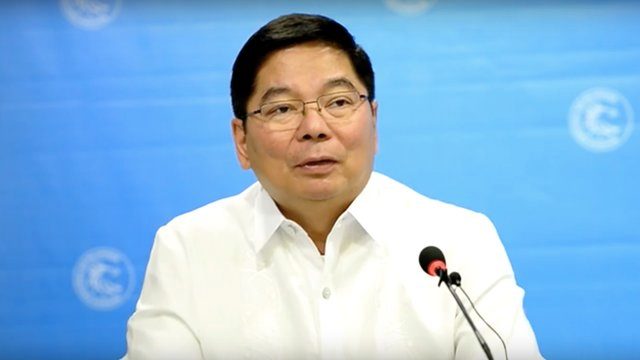SUMMARY
This is AI generated summarization, which may have errors. For context, always refer to the full article.

MANILA, Philippines – The Bangko Sentral ng Pilipinas (BSP) said it will likely leave its policy rates unchanged, just hours after the widely-expected US Federal Reserve key interest rate hike.
“At the moment, given the Fed action was as expected and inflation for now is seen to be well-behaved, there appears to be no need to tweak policy settings,” BSP Governor Amando Tetangco Jr said in a text message to reporters.
The US Federal Reserve on Wednesday, March 15 (Thursday, March 16 in Manila), raised the benchmark interest rate a quarter point, the 2nd increase since US President Donald Trump’s election and only the 3rd in a decade.
The Philippine financial market saw this coming after Fed officials signaled in advance that it would gradually hike rates. (READ: How a Fed rate hike impacts the Philippine economy)
“The Fed’s move though widely expected still contained valuable market information, particularly the indication of continued gradual pace of next steps and the consequent market interpretation that the Fed is willing to let inflation overshoot,” Tetangco said.
Inflation kicked up to a 27-month high of 3.3% in February from 2.7% in January due to higher oil prices, fare hikes, and more expensive electricity rates.
The BSP has set an inflation target of 2% to 4% between 2017 and 2020, while economic managers penciled in a gross domestic product (GDP) growth of 6.5% to 7.5% this year.
An economist said the strategy to hike early on has allowed the BSP to “stand pat in the face” of 3 Fed rate hikes to date.
The BSP has kept policy rates unchanged since 2014. The BSP Monetary Board is scheduled to meet on March 23 to discuss interest rates.
“In a way that can be seen as positive for risk sentiment in the near term, but on the whole the Fed’s balanced view could be good for global growth and trade particularly for trading partners of the US like the Philippines,” Tetangco said.
“We will therefore watch out for further developments on the trade side to see the impact on bank and corporate credit activities,” he added.
Some volatilities
Tetangco had told reporters on the sidelines of a convention in Makati City on Tuesday, March 14, that the Fed’s decision to raise interest rates could worsen volatility in the Philippine financial market.
“It’s going to remove at least one source of uncertainty in the market. But, as you know, the next question would be ‘When is the next move and by how much?’ So, I think, during this process of normalization we’ll continue to see some volatility in financial markets,” the BSP chief had said.
Even before the Fed rate hike, the local currency had been trading above P50 since February 17. The Philippine peso on Thursday ended trading at P50.12 against the dollar, slightly strengthening from the P50.34 finish a day ago.
The Philippine Stock Exchange index (PSEi) also settled at 7,278.60, which is 24.81 points higher than Wednesday’s close.
“We just have to manage our own markets here in such a way that we don’t experience destabilizing moves or sharp fluctuations in market prices,” Tetangco said. – Rappler.com
Add a comment
How does this make you feel?
There are no comments yet. Add your comment to start the conversation.